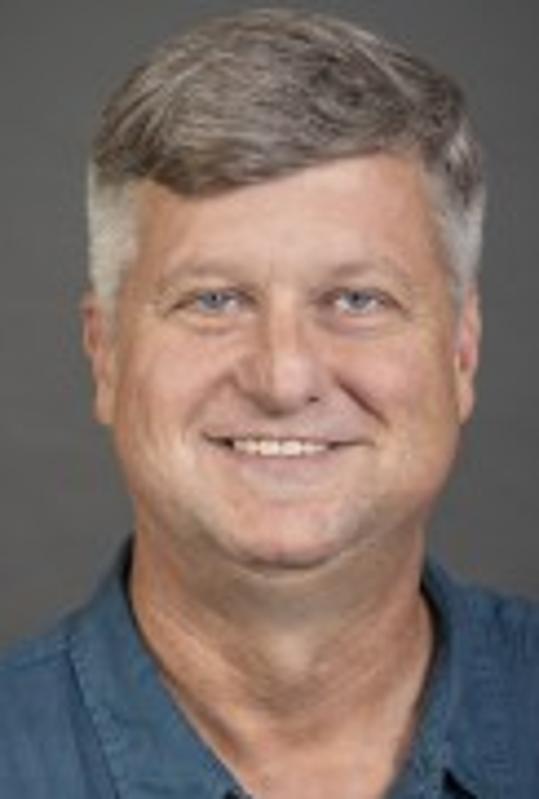
“There’s Something Happening Here: Exploring the Evolving Intersection Between Cannabis and Older Persons” is the theme of the recent issue of Public Policy & Aging Report, a journal of The Gerontological Association of America. Dr. Brian Kaskie, a faculty member and researcher at the University of Iowa’s College of Public Health authored the issue’s introductory article, “There’s Something Happening Here, and What it is Ain’t Exactly Clear.” As a specialist in public health policy, he looks to research to clarify what is, in fact, happening around the remarkable ways that older adults are experiencing cannabis.
In his opening article, Kaskie describes his first experience, around five years ago, “observing a rampant increase in opioid prescribing within Iowa’s nursing and assisted-living facilities, with some older adults being admitted with fentanyl patches already in place. It struck me that cannabis might be a useful alternative: a way to decrease the rampant overprescribing and misuse of opioids among older Americans.”
Kaskie currently leads the Cannabis and Older Persons Study at the University of Iowa, where he is examining the increasing use of cannabis among older persons and evaluating the implications for opioid abuse and end of life care.
I spoke to Kaskie on the phone and asked him to share his insights on older adults and cannabis use from his research and a policy perspective.
Brian Kaskie (BK): In terms of the use patterns, what we found most interesting is that this really isn’t about the 15-30 year olds. As the research has shown, cannabis use even with legalization hasn’t changed substantially for the under-50 population. But where it has changed is for the over-50 population. And we find that pretty interesting to find what the motives are for that.
Abbie Rosner (AR): And what do you think the motives are?
BK: Well, we’ve chopped up the data to look into that, and some of this is really just the aging of the Baby Boomers which, as a generation, has historically had more favorable attitudes to cannabis use. So now that they’re older and not working anymore, some are just continuing to use or returning to use cannabis as a form of wellness or recreation. They enjoy it. It’s relaxing.
But what we also hear in a lot of the conversations in focus groups we conducted as part of our studies, that it’s not just a favorable attitude about it, but they also see it as a way to relieve aches and pains. I remember doing a focus group out in Colorado in one of these ski towns, and the baby boomers would say, after I ski my joints are mildly inflamed and instead of taking an Advil, I’ll take a few gummies.
There’s another group that we find really interesting, and those are the people who really have some lifelong disposition that wasn’t favorable to cannabis use. But now they have some sort of disease, like MS or glaucoma, and they’re finding the usual pathways provided by medicine aren’t necessarily working, and they are more likely to try cannabis. They’re at the end of their rope in some regards.
There’s the guy who was a Marine in Vietnam who says he used to bust people for using drugs all the time, but never used them himself. But now that he’s got MS and got to the point that he couldn’t hold a cup of coffee no matter what the doctor tried, he was willing to try anything. He got to cannabis in an informal way – maybe through his son. And as we were talking, he was drinking coffee. And when I commented on it, he said, “that’s the cannabis.”
So you have this other group of users who really only see cannabis use for medical reasons. They don’t want it to be openly legalized and they are especially wary of opening the floodgates so children can access it. They use it themselves, but they’re cautious.
AR: Your introduction to cannabis coincided with your discovery of how the opioid epidemic was affecting older adults. Can you speak to that?
BK: In my other life, I oversee policy and programs, and we do evaluations of nursing homes and assisted living care. About 7-8 years ago I was asked to do some surveillance of local nursing homes because we had heard about this unwelcome return of opioids.
So we did this investigation and it was kind of shocking to see how opioids were seen as the go-to treatment approach. It reminded me of the 80s where we had all these problems in nursing homes and they were so bad that we passed a federal law to address them.
The opioid epidemic in our perspective spills over into the nursing facilities, and if you look at the data, the ones who are most likely to use opioids are older women.
One of the articles in the report is about Illinois, which is among the first states that legitimized cannabis as a substitute for opioids. They have something called the opioid alternative pilot program. Anyone with a prescription for opioids can go into a medical dispensary and swap it out for cannabis. So far, we’re pretty amazed at the numbers we’ve seen…
AR: Your research group recently made some important findings about opioid and cannabis use among older adults that are soon to be published.
BK: Yes. I do what’s called public health surveillance. And what we do is go out and survey large populations of older adults and then basically say, OK how many of you use cannabis? Part of this study we did in Colorado and Illinois, where we found a fairly large number of people who are using cannabis, a fairly large number of people who are using opioids and a fairly large number of people who are using both.
And when we looked at their clinical profiles: what are the medical reasons for taking these substances, we found that the symptom profiles in each of the three groups were very similar. All of them were saying that they were taking it for pain. Pain’s a hard thing to measure – I’ll give you that. But when we recorded how much pain and things like that, the self-reports in these groups were fairly comparable – and it didn’t seem that the people who were taking opioids and cannabis together were in a huge amount of pain whereas people who were only using cannabis were in a little bit of pain. And that’s important to start with. Because you really only need opiates when your pain level is at its highest.
So then we said: if your pain’s all the same, then what else can we find – and that’s where we started to find the differences. Which had to do with attitudes towards cannabis in the context in which these people lived.
People who are more likely to use opioids and not cannabis in states where it’s already legal, i.e. Colorado and Illinois, are more likely to have a negative attitude towards cannabis. They think it’s risky – that it leads to harder drug use. And on top of it, these people live in areas where two things are coming together. First, there aren’t a lot of cannabis clinics. Because remember, even if a state approves it, local jurisdictions can prevent cannabis shops from opening. So not only do these local jurisdictions not give them access to it, but we also found out that when these older adults asked their local physician about cannabis, the physicians wouldn’t talk to them about it.
So what we are seeing is that the use of opioids isn’t really driven by a clinical indication, as much as it is a social construction.
Let me be clear – as researchers, we’re excited to get significant results. If they showed us that people who are using opioids have a different clinical profile – that would be news too. But that’s what makes this fun – because all this is news.
[“source=forbes”]




